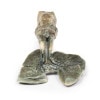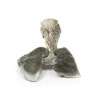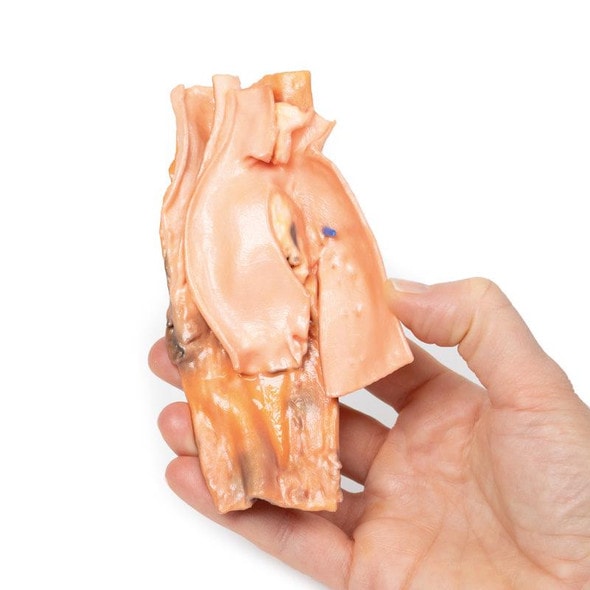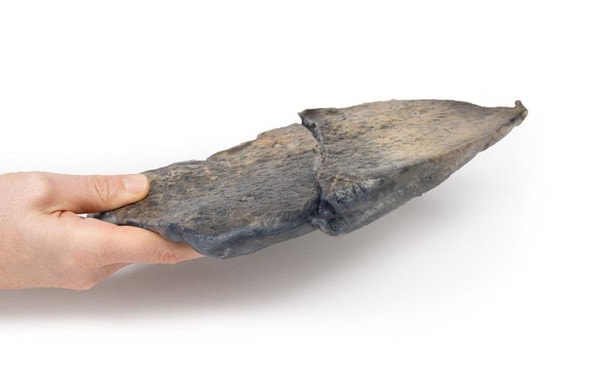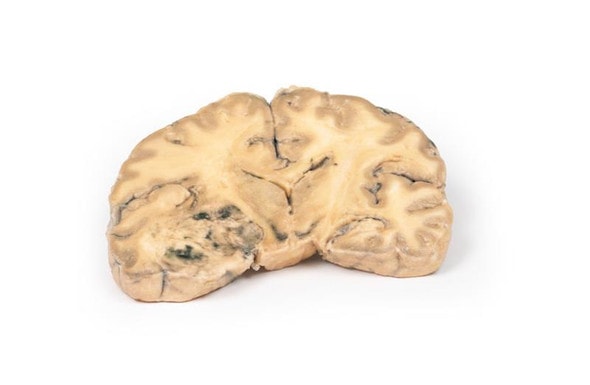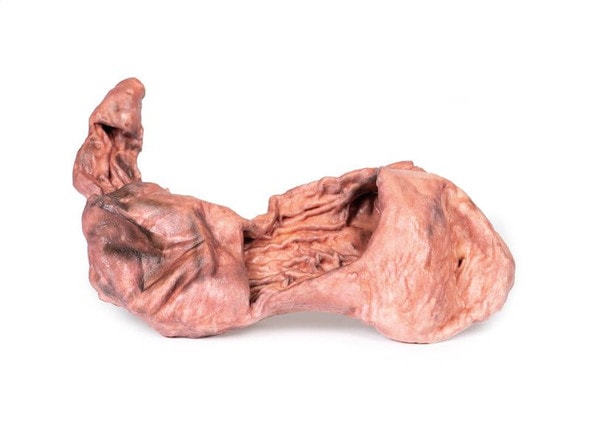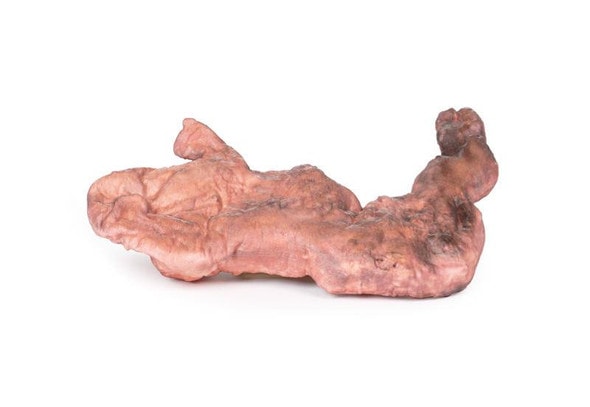- Home
- Anatomy Models
- Respiratory System Anatomy Models
- 3D Printed Tracheoesophageal Fistula and Oesophagus Atresia
Description
Developed from real patient case study specimens, the 3D printed anatomy model pathology series introduces an unmatched level of realism in human anatomy models. Each 3D printed anatomy model is a high-fidelity replica of a human cadaveric specimen, focusing on the key morbidity presentations that led to the deceasement of the patient. With advances in 3D printing materials and techniques, these stories can come to life in an ethical, consistently reproduceable, and easy to handle format. Ideal for the most advanced anatomical and pathological study, and backed by authentic case study details, students, instructors, and experts alike will discover a new level of anatomical study with the 3D printed anatomy model pathology series.
Clinical History
A 32-year-old female G3P0 (gravida 3, para 0 i.e., has had two pregnancies, with neither of the embryos surviving to a gestational age of 24 weeks) presents in preterm labor at 25 weeks gestation. The GP had noted an increased fundal height at 30cm one week prior, but the mother had refused prenatal testing or ultrasound, and was lost to follow up. She delivered a live born male baby. Examination of the baby noted polydactyly, imperforate anus, excessive drooling, and a loud pan-systolic murmur. A single umbilical artery was noted in the umbilical cord. The baby had difficulty feeding with increasing respiratory distress. The baby died 2 days later from aspiration pneumonia.
Pathology/Specimen Details
The specimen comprises the tongue, larynx, trachea, bronchi, both lungs and oesophagus of the fetus. The trachea and bronchi have been divided in the midline. A fistula is present just above the bifurcation at a communicating fistula can be seen connecting the distal oesophagus to the trachea (arrow). This is an example of a Type C Tracheoesophageal Fistula (oesophageal atresia with distal tracheoesophageal fistula). It is difficult to discern if the oesophagus ends as a blind pouch at the lower extent of the specimen.
Further Information
Tracheoesophageal Fistula (TEF) is a common congenital abnormality occurring in about 1 in 4000 live births. TEF usually occurs with oesophageal atresia (sometimes abbreviated to EA, reflecting the US spelling of esophagus. TEF are classified according to their anatomical configuration. Type C is the most common configuration; as described above, in which oesophageal atresia with distal tracheoesophageal fistula making up 86% of cases. TEF occurs without oesophageal atresia in only 4% of cases, Type E.
TEF and oesophageal atresia are caused by defective lateral septation of the foregut into the oesophagus and trachea. It is believed that a defect in epithelial-mesenchymal interactions causes failed branching of a lung bud branch which becomes the fistula tract. It is associated with VACTERL (vertebral defects, anal atresia, cardiac defects, TEF, renal anomalies, and limb abnormalities) or CHARGE syndrome (Coloboma, Heart defects, Atresia choanae, Growth retardation, Genital abnormalities, and Ear abnormalities).
Oesophageal atresia can be seen on prenatal ultrasound as polyhydramnios, absent/collapsed stomach, and proximal oesophageal pouch dilation. EA with TEF can be more difficult to see on ultrasound as fistula allows fluid flow into the stomach. Polyhydramnios occurs in one third of cases of EA with distal TEF. Postnatal symptoms vary on the configuration of the fistula. These include excessive drooling, respiratory distress, difficulty feeding and choking. Reflux of gastric contents can lead to aspiration pneumonia as in this case.
Diagnosis can be made by failing to pass a nasogastric tube into the stomach along with X-ray imaging. Fluoroscopy with contrast can be used for more indeterminate cases. For milder cases diagnosis may be made later with endoscopic investigation. Treatment involves surgical correction of the defects. Prognosis is usually good. However, cases with associated chromosomal, prematurity and cardiac defects are at increased risk of death.
Advantages of 3D Printed Anatomical Models
- 3D printed anatomical models are the most anatomically accurate examples of human anatomy because they are based on real human specimens.
- Avoid the ethical complications and complex handling, storage, and documentation requirements with 3D printed models when compared to human cadaveric specimens.
- 3D printed anatomy models are far less expensive than real human cadaveric specimens.
- Reproducibility and consistency allow for standardization of education and faster availability of models when you need them.
- Customization options are available for specific applications or educational needs. Enlargement, highlighting of specific anatomical structures, cutaway views, and more are just some of the customizations available.
Disadvantages of Human Cadavers
- Access to cadavers can be problematic and ethical complications are hard to avoid. Many countries cannot access cadavers for cultural and religious reasons.
- Human cadavers are costly to procure and require expensive storage facilities and dedicated staff to maintain them. Maintenance of the facility alone is costly.
- The cost to develop a cadaver lab or plastination technique is extremely high. Those funds could purchase hundreds of easy to handle, realistic 3D printed anatomical replicas.
- Wet specimens cannot be used in uncertified labs. Certification is expensive and time-consuming.
- Exposure to preservation fluids and chemicals is known to cause long-term health problems for lab workers and students. 3D printed anatomical replicas are safe to handle without any special equipment.
- Lack of reuse and reproducibility. If a dissection mistake is made, a new specimen has to be used and students have to start all over again.
Disadvantages of Plastinated Specimens
- Like real human cadaveric specimens, plastinated models are extremely expensive.
- Plastinated specimens still require real human samples and pose the same ethical issues as real human cadavers.
- The plastination process is extensive and takes months or longer to complete. 3D printed human anatomical models are available in a fraction of the time.
- Plastinated models, like human cadavers, are one of a kind and can only showcase one presentation of human anatomy.
Advanced 3D Printing Techniques for Superior Results
- Vibrant color offering with 10 million colors
- UV-curable inkjet printing
- High quality 3D printing that can create products that are delicate, extremely precise, and incredibly realistic
- To improve durability of fragile, thin, and delicate arteries, veins or vessels, a clear support material is printed in key areas. This makes the models robust so they can be handled by students easily.





